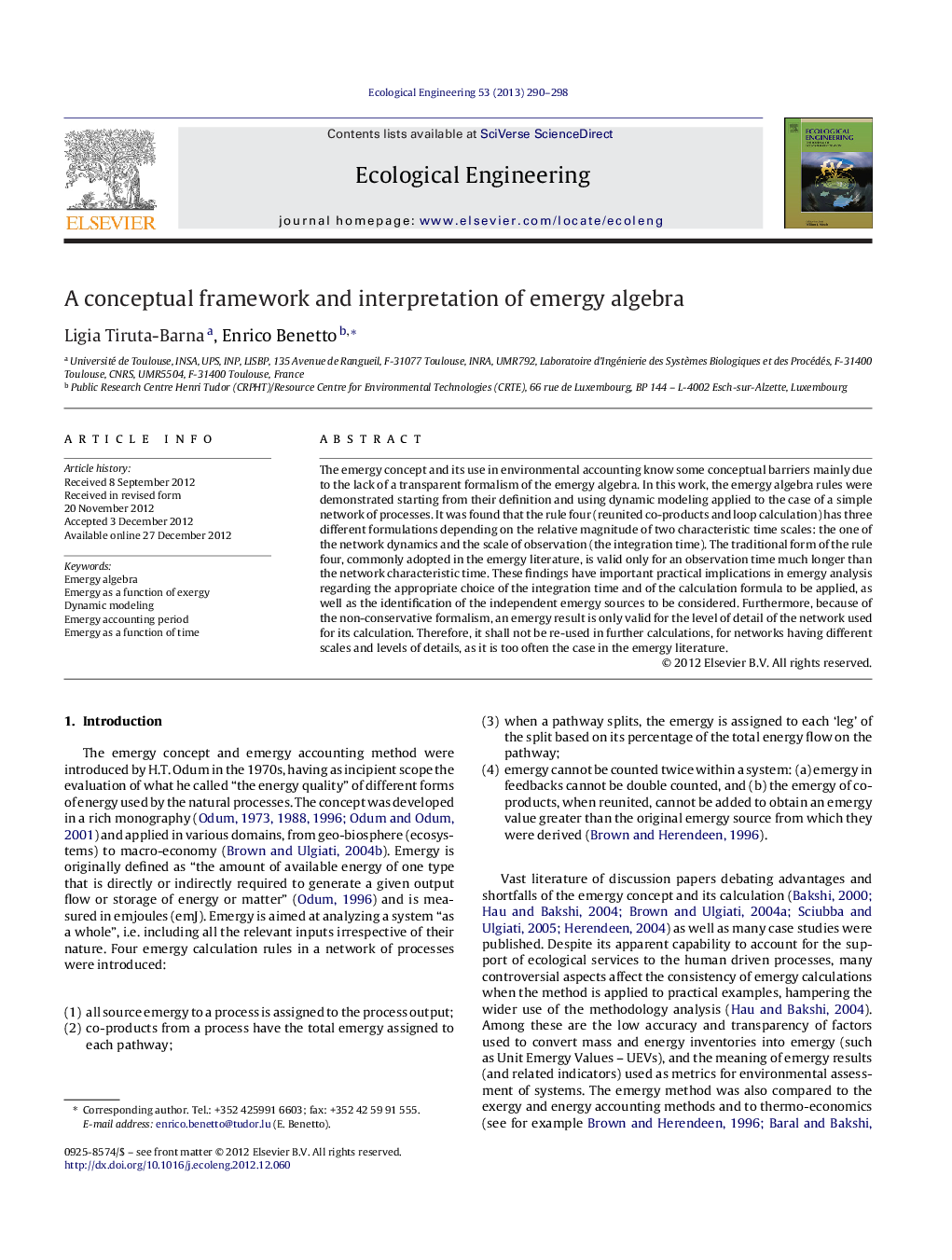| Article ID | Journal | Published Year | Pages | File Type |
|---|---|---|---|---|
| 4389695 | Ecological Engineering | 2013 | 9 Pages |
The emergy concept and its use in environmental accounting know some conceptual barriers mainly due to the lack of a transparent formalism of the emergy algebra. In this work, the emergy algebra rules were demonstrated starting from their definition and using dynamic modeling applied to the case of a simple network of processes. It was found that the rule four (reunited co-products and loop calculation) has three different formulations depending on the relative magnitude of two characteristic time scales: the one of the network dynamics and the scale of observation (the integration time). The traditional form of the rule four, commonly adopted in the emergy literature, is valid only for an observation time much longer than the network characteristic time. These findings have important practical implications in emergy analysis regarding the appropriate choice of the integration time and of the calculation formula to be applied, as well as the identification of the independent emergy sources to be considered. Furthermore, because of the non-conservative formalism, an emergy result is only valid for the level of detail of the network used for its calculation. Therefore, it shall not be re-used in further calculations, for networks having different scales and levels of details, as it is too often the case in the emergy literature.
Graphical abstractFigure optionsDownload full-size imageDownload as PowerPoint slideHighlights► We used dynamic modeling to deduce the time dependence of emergy algebra. ► Co-product reunification and loop examples were considered in this analysis. ► We found that the 4th rule has three formulas for Em calculation as a function of time. ► Em values depend on the time scale and the level of detail of the system description. ► Em values are strongly dependent on the energy transmission pathway.
